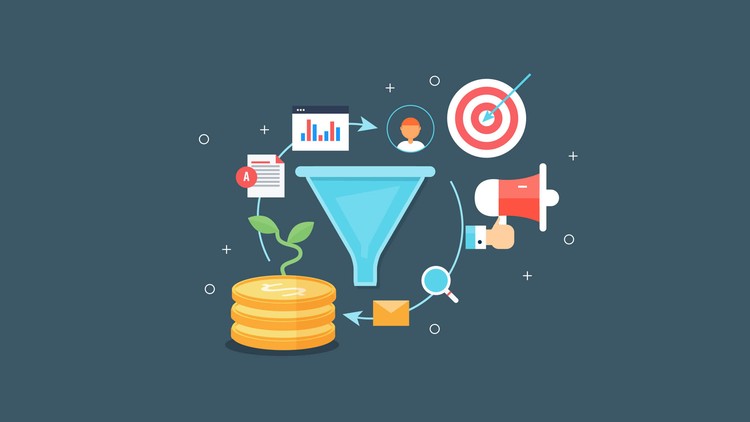Nowadays, Master Growth marketing has become an essential strategy for businesses. It helps for those looking to scale efficiently in today’s digital landscape.
Growth marketing can help accelerate business growth in 2024 and beyond with the right data-driven optimization of the sales funnel. Let’s discuss what is growth marketing, its difference with Traditional marketing, and some strategies for success.
Growth Marketing – What is it?
Master Growth marketing mainly focuses on continually improving conversions across the entire customer journey.
Rather than viewing marketing as a siloed department, growth marketing integrates data-based optimization across all departments to maximize growth.
Some of the key elements of growth marketing include,
- Data-driven
Decisions are informed by collecting and analyzing metrics across the customer journey.
- Full Funnel Focus
Rather than focusing solely on acquisition, growth marketers optimize every stage from awareness to retention and referrals.
- Cross-Departmental
Growth marketing breaks down silos and aligns company goals by sharing data insights across teams.
- Experimentation
Rapid testing of hypotheses through A/B tests, landing pages, messaging, pricing, etc.
Growth Marketing vs Traditional Marketing – The Main difference
Traditional marketing concentrates only on activities like branding and lead generation. But, Master growth marketing uses data to connect marketing to end-business goals like revenue and growth.
Growth marketing still leverages traditional strategies but layers optimization utilizing modern data analytics.
Rather than leaving lead nurturing to sales, growth marketers remain involved through the entire customer journey.
They don’t just count new leads; they dig into granular metrics around conversions, churn, referrals, and beyond.
Read More- Five Types Of Spamming Links That You Need To Avoid
Strategies For Growth Marketing
An effective growth marketing strategy utilizes data, testing, and full-funnel optimization across departments to improve conversion rates.
- Build a data foundation
You have to implement tools to collect, analyze and share data insights across the organization. Also, understand baseline metrics.
- Map the customer journey
Identify each touchpoint from initial awareness to retention and referrals. Look for friction points.
- Set hypothesis-driven goals
Develop clear hypotheses and quantifiable goals for optimization experiments.
- Run A/B tests
Rapidly test changes to copy, headlines, images, offers, pricing pages, email campaigns, etc.
- Analyze relentlessly
Continuously measure the impact of optimizations across the entire customer journey. Tweak based on insights.
- Automate when possible
Identify areas where automated workflows or triggered campaigns can optimize the journey.
- Foster cross-departmental collaboration
Ensure insights are shared between teams and work towards unified goals.
Growth Marketing Metrics
Growth marketers need to focus on metrics beyond vanity numbers like total followers or page views.
A data-driven approach requires an understanding of metrics aligned to growth goals. Some key growth marketing metrics include,
- Acquisition Cost Per Customer (CAC)
- Customer Lifetime Value (LTV)
- Churn Rate
- Lead Conversion Rate
- Sales Velocity
- Customer Acquisition Cost (CAC) Payback Period
- Referral Rate
- Retention Rate
These actionable metrics should be monitored continuously to identify opportunities and gauge performance. Dashboards and automation make tracking key metrics much easier.
Optimizing Each Stage of the Funnel
Rather than concentrating only on driving more traffic or followers, growth marketers need to look at optimizing each stage of the customer journey.
Here are some examples of growth experiments to run.
- Awareness Stage
Test different platforms, partnerships and influencers to drive awareness.
Analyze web traffic sources and proactively build on the highest-converting channels.
- Acquisition Stage
Run A/B tests on gated content, email/SMS campaigns, landing pages, and lead magnets.
Experiment with targeting and personalization to improve conversion rates.
- Activation Stage
Reduce time to first-value by optimizing onboarding and initial product experience.
Analyze usage metrics to reduce churn and improve product-market fit.
- Revenue Stage
Test pricing and packaging options, special offers, and upsells.
Optimize checkout and payment flows to reduce cart abandonment.
- Retention Stage
Build loyalty programs and VIP experiences for delighted customers.
Set up triggers and workflows to automate retention campaigns.
- Referral Stage
Foster community and brand advocacy with user-generated content.
Test referral program terms and rewards to maximize sharing.
The growth marketing flywheel keeps spinning as data insights from each stage inform optimization of the next. Small changes compound over time into significant growth.
Overcoming Growth Marketing Challenges
Adopting a growth marketing approach comes with some common challenges including lack of talent, coordination, or bandwidth.
Here are some tips to help overcome hurdles on your growth marketing journey.
- Seek both hard and soft skills in growth marketing hires like analysis, creativity and collaboration.
- Start small and expand optimization efforts over time. Quick wins build momentum.
- Foster cross-functional collaboration and align on overall business goals.
- Automate repetitive tasks through workflows and AI to focus energy on optimization.
- Build a continuous testing and learning culture. Fail fast and course correct.
The Path to Growth Marketing Mastery
Implementing an effective growth marketing framework takes time and continuous optimization. But the payoff from compounding small improvements can be transformational business growth.
Here are some keys to growth marketing mastery.
- Obsess over the metrics that matter, ignoring vanity stats.
- Take an experimentation mindset.
- Focus on solving customer pain points, not pushing products.
- Build processes that support automation and cross-team collaboration.
- Never stop learning. Growth marketing leverages creativity just as much as data.
Read More – Why AI Content Hurts SEO?

